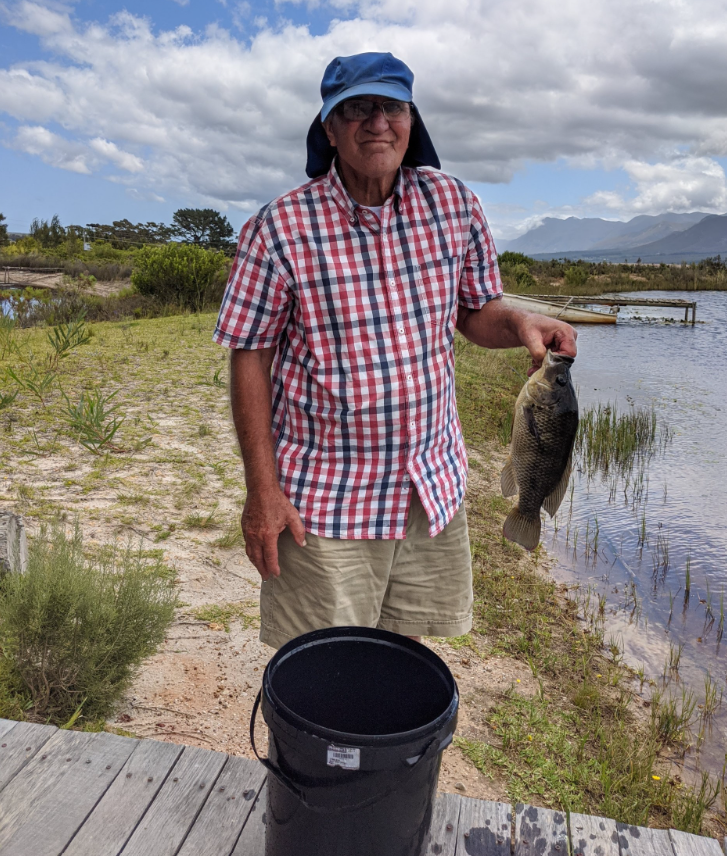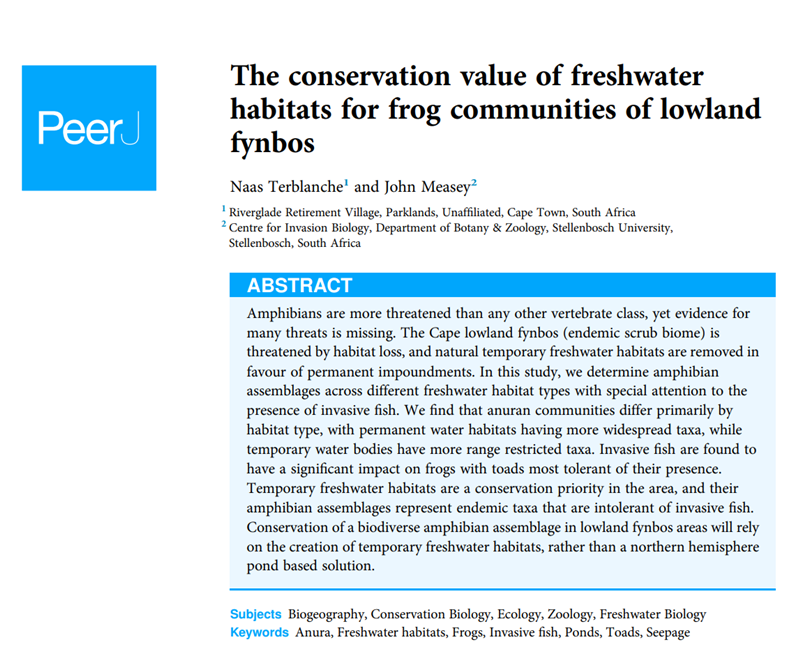How do fish invasions change fynbos amphibian communities?
Back in 2017, Naas Terblanche visited me in my office in Stellenbosch. A retired agriculturalist (with an MSc in animal nutrition) turned winemaker, Naas had spent the first 16 years of his retirement in Stanford developing a passion for the frogs that he found there. He explained that he wanted to conduct a scientific study on the different communities of frogs that he found in the area near where he lived, using the skills of sampling and identification that he had developed.
We put together a study that tested the influence of invasive fish on various different habitat types in the region. Spread across two watersheds in the Overstrand, Naas used satellite data to select 200 different freshwater sites and categorise them into different waterbody types. From these we selected 50 that represented a balanced number of each category type.

Above, Naas T shows off one of the invasive fish sampled from a dam where he also studied the amphibian community. What a great way to spend your retirement!
Naas spent the next two winters visiting each of these 50 sites in turn, identifying the amphibian communities therein. It was long and hard work as he had to visit each site once during each year, and spend the afternoon and evening conducting the surveys so that he saw, captured or heard every species present.
The data showed convincingly that invasive fish were important in determining the composition of amphibian communities. Perhaps unsurprisingly, toads (Raucous toads and Western Leopard toads) that have toxic eggs and larvae are particularly tolerant of invasive fish, while the most intolerant was the plantanna, X. laevis, perhaps because they spend most of their time in the water.
Secondly, the resulting data demonstrated some interesting trends in freshwater habitat types. First, we confirmed that different habitat types contain different amphibian assemblages in the fynbos, with those most valuable being from temporary aquatic habitats. Permanent habitats, such as garden ponds and dams, were not particularly useful for local amphibians, but more for widespread common species. This means that if you want to create a freshwater habitat for conservation purposes in the fynbos, you need to make sure that it is temporary (not permanent), drying out in the summer months and filling in the winter.
Read the paper in full:
Terblanche, N., Measey, J. (2023) The conservation value of freshwater habitats for frog communities of lowland fynbos. PeerJ 11: e15516 https://doi.org/10.7717/peerj.15516


